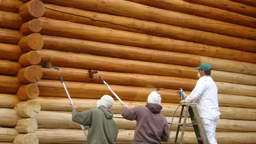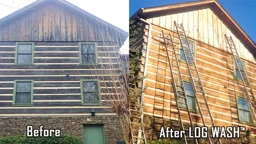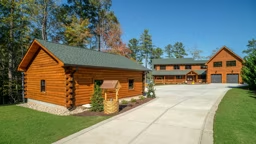
While warm weather means summer adventures, it also means the start of hurricane season. If you live close to the coastline, it’s important to be prepared for the possibility of storms and have a plan in place if one is headed your way.
Tim Tracy, a National Sales Trainer from Groundworks, had some advice and tips to make sure our readers’ homes stand up against a hurricane and how to tackle any damage that arises. The Atlantic hurricane season starts June 1 and lasts until November 30.
High Risk Areas
When you live along the Atlantic and Gulf Coast, hurricanes and tropical storms are common practice, but living outside of these areas doesn’t mean you’re in the clear.
The Southwest and Pacific Coast can have heavy rains and floods from storms coming from Mexico, and many islands, including Hawaii, Guam, American Samoa and Puerto Rico also are also at risk. Even residents who don't live in coastal areas can be in danger of flooding from the heavy rains associated with these storms.
“Low-lying areas accumulate the water and can have the most damage because the water is the most damaging part of a hurricane other than the high-force winds,” Tim said. “If the storm itself slows down in a low-lying area, it will dump a ton of precipitation and the flooding will cause a bunch of damage, both seen and unseen.”
Ways to Prepare
While preparing your home is important, keeping yourself and your family safe should be step one.
“For people who have just moved into a new house, my recommendation is always figuring out how you are taking care of the family first,” suggests Tim. “There’s a resource called ready.gov which has an action plan which can serve as a starting point, and then you can add in school plans, work plans, establishing your emergency meeting locations, setting up family emergency contact numbers and looking at your community’s hurricane response plan. Once you have an idea of what this plan will look like, start practicing together so everybody’s on the same page.”
After your plan is made and practiced, the next step is having a water mitigation system. Keeping these components up to standard and checking them before storms is the surefire way to prevent as much water damage as possible. During a hurricane, water generally causes more damage than wind, and just one inch of water can cause $25,000 in damages, according to FEMA.
“Do you have a system in place to capture, channel and discharge the water?” asks Tim. “I believe in backups and a backup to your backup. You have your pump when everything’s working, you have a generator when you lose power and you have a battery backup if the generator isn’t working.”
Other tips to keep you, your family and your home safe include:
- Maintaining your roof. Any damage here can allow rain into your attic and do a great deal of damage to your home.
- Review home insurance. Flooding from storms isn’t typically covered by homeowner’s insurance. Check with your insurance agent or the National Flood Insurance Program on the coverage that’s available.
- Build an emergency kit. If you live on an island or in a remote area, consider having supplies to last at least 10 days.
After the Storm
Once the storm has passed, you’re not fully in the clear yet. Whether you’re returning from an evacuation or exiting a safe spot in your home, checking for damage should be done as soon as possible.
If you return to a home that looks unsafe to enter, do not enter and wait for help. If the home appears structurally sound, the checklist of items to inspect starts from the ground up.
- Check your basement or crawl space for water intrusion or damage. Clear any water that remains, out as quickly as possible to ensure no further damage or mold occur.
- Once the basement is clear, check the interior walls for cracks and separation, the windows to ensure they haven’t been knocked out, siding that may have been displaced, and (with proper precaution) the roof inside the attic and outside the home.
- If you suspect a problem, call a trusted home services professional to inspect the damage. An issue will never be cheaper to fix than it is today.











